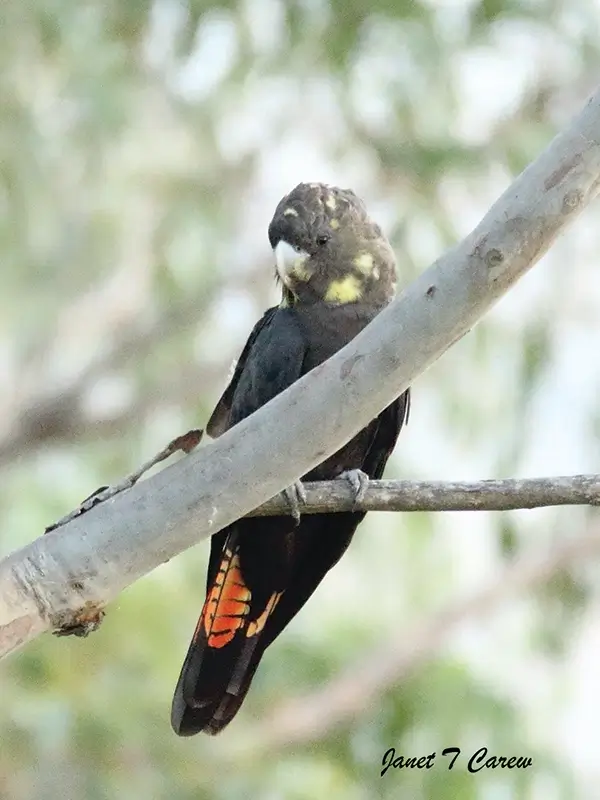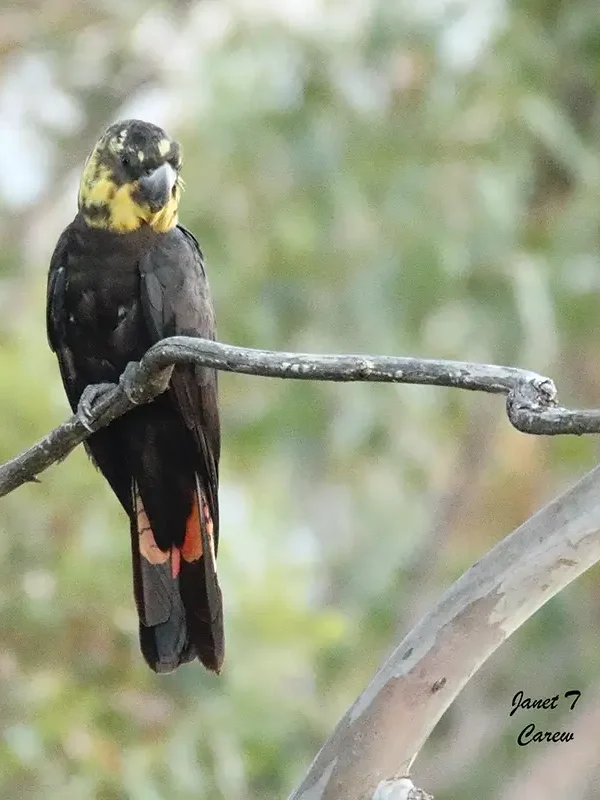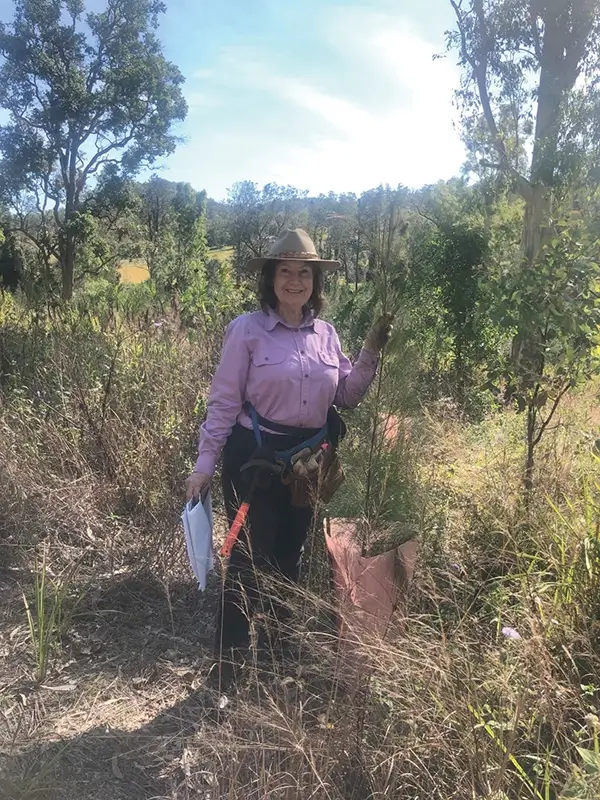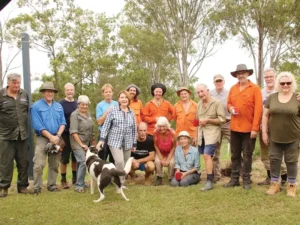
Growing up in Yuggera country, north Brisbane, roaming and discovering the wetlands and creeks around our property, I developed a strong connection with the land, as had my ancestors before me. Our father would harvest one of the many she oaks for the annual Christmas tree and the smell of aging she oak leaves (cladodes) remains nostalgic. Little did I know what a huge impact she oaks would have on my life in later years.
Land for Wildlife Discovery
Fast forward to 2001, when, after a diverse corporate career in Australia and overseas, I felt the need to reconnect with the land and the harmony it brings. After searching for a place that felt right on the Sunshine Coast (my go to place for peace and recovery), I purchased a 36-acre property in the hills of Mooloolah on Gubbi Gubbi country in 2002.
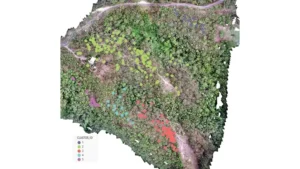
During my travels I liked the sentiment of the lovely green Land for Wildlife signs and wondered what they entailed. Luckily, in early 2003, Barung Landcare held a week of workshops for property owners which I enthusiastically attended, soaking up as much information as possible. My questions about Land for Wildlife were answered when Nick Clancy from Sunshine Coast Council took to the stage. This was the beginning of a great connection and working relationship, development of knowledge, and conservation of my property with the Land for Wildlife team. After joining Land for Wildlife, I added a Conservation Covenant and Voluntary Conservation Agreement (VCA) a few years later. “Torulosa Terraces” Private Conservation Area was to become a well-known research site and hotspot for the threatened Glossy Black Cockatoo that I had observed visiting the property to feed on the Forest She Oak (Allocasuarina torulosa) seeds throughout the property.
During our annual VCA inspection in 2019, Nick and I and Jem Dunlop from South East Land Repair, the contractors who carried out the work under the VCA, discussed the changing habitat with the increasing numbers of rainforest pioneers in the Allocasuarina torulosa stands. Being steep country, use of fire is challenging, and risky with Casuarina species (as they are fire prone), so I wondered how I could conserve the important feed trees for the Glossies.
Research – Set up Future Food For Glossies Project
It seemed feasible to collect seeds from known feed trees and plant them at other sites to see if more feed trees would develop. So, in June 2019, I instigated the Future Food For Glossies Project with this aim. Barung Landcare came to my assistance to work with me to collect the seed, propagate and grow up the trees ready for planting.
Then I needed to have a place to plant them. I was concerned that if they were planted on private property, there would be the risk of the owner selling and moving on with a new owner not willing or able to conserve the trees. Despite the risk, I chose two sites at Torulosa Terraces and, with the help of my VCA contractors and volunteers from Hinterland Bush Links, planted 100 trees in early 2020.
I continued to seek additional sites and approached Ben Green from Sunshine Coast Council who needed to revegetate a site at a newly acquired tract of land, Tuan Reserve, near Kenilworth. Along came Covid-19, and the huge event planned for the planting had to be cancelled, and the 350 Allocasuarina torulosa trees were planted by Council contractors in March 2020. Since then, thousands of trees propagated from the seed of feed trees from Torulosa Terraces have been planted throughout the Sunshine Coast. My plan is to monitor the development of these test trees to fruition and record utilisation for feeding by Glossy Black Cockatoos. I estimate that will take up to ten years.
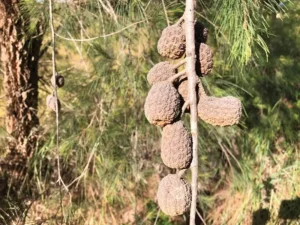
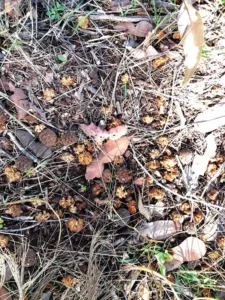
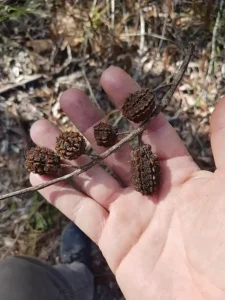 Research – University of the Sunshine Coast
Research – University of the Sunshine Coast
Meanwhile, knowing that more research needed to be done to back up our action, I contacted Dr Gabriel Conroy at the University of the Sunshine Coast to find someone to do the research. As no one was available, I started an Honours research degree with Dr Conroy, with Dr Steven Ogbourne and Dr Javier Leon making up the advisory team. We conducted 13 months of field surveys at Torulosa Terraces until December 2021. We recorded feeding evidence and mapped the whole property and feed trees on ground and with drones, and we finalised the thesis in August 2022. The outcome of the research was multi-faceted and supported the possibility of propagating feed trees from the seed of known feed trees. More needs to be done to prove this, however.
The results of this work together with the submission of annual Glossy Black Cockatoo sightings and feeding activity submitted to the Glossy Black Conservancy for many years, is that Torulosa Terraces is now listed as a significant Glossy Black Cockatoo habitat, a legacy of which I am so proud and honoured to have been the custodian of this land for 21 years.
Transition
Unfortunately, due to health concerns, I became the property owner who needed to sell and move on. I would not sell to anyone who didn’t support Land for Wildlife. So I sought someone who was comfortable with a conservation covenant and prepared to negotiate a new Voluntary Conservation Agreement with Sunshine Coast Council to continue the work. Luckily, we found such a person and the new owner is settling in and has committed to a VCA and is open to the possibility of Glossy research continuing.
The work of conservation will continue thanks to the Land for Wildlife program, which has resulted in so many people from all over the country, supported by Conservation Partnerships Officers, working with others to conserve this beautiful land of which we are the custodians.
Article by Janet Carew
(Former) Land for Wildlife member
Mooloolah, Sunshine Coast

